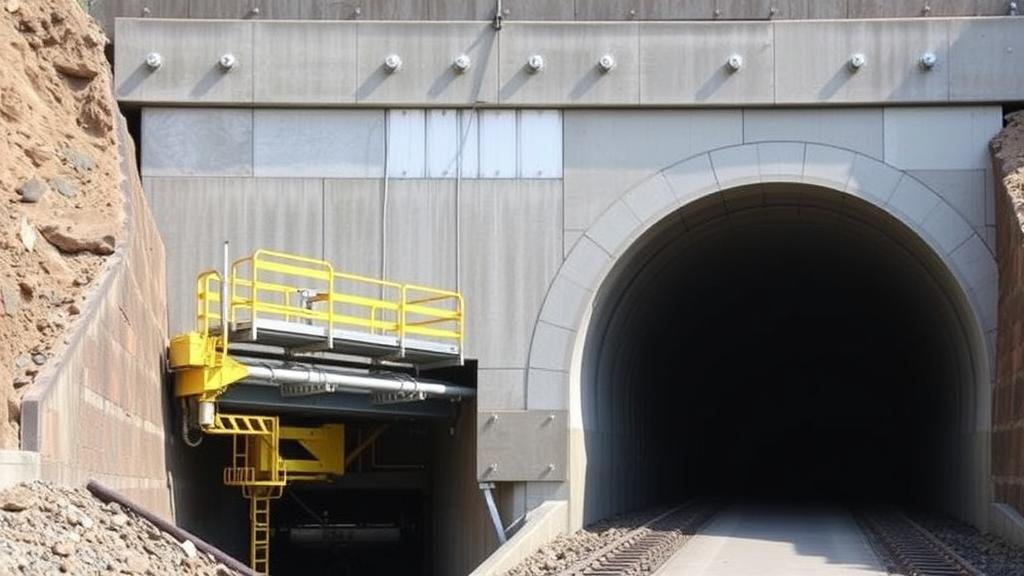How to Secure Tunnel Junctions With Steel Sets and Reinforced Concrete
Introduction
Tunnel junctions represent critical intersections in underground transport systems, including railways and highways. Securing these junctions effectively is vital to ensuring both structural integrity and operational safety. This article explores the use of steel sets and reinforced concrete to secure tunnel junctions, focusing on the design principles, methods of application, and real-world examples.
Understanding Tunnel Junctions
A tunnel junction is a point where multiple tunnels intersect. e junctions are subjected to various stresses, including soil pressure, dynamic loads from passing trains, and vibrations. Without adequate support, tunnel junctions can experience failures that may lead to costly repairs and safety hazards.
The Role of Steel Sets
Steel sets are structural elements that provide additional support and stability to tunnel walls and ceilings. Typically made from high-strength steel, these sets reinforce the overall framework of a tunnel, allowing for greater resistance to deformation and collapse.
- Application: Steel sets are usually installed immediately after the excavation of the tunnel has been completed.
- Load Distribution: They help distribute loads evenly across the tunnel structure, which is essential in preventing localized failures.
Reinforced Concrete Solutions
Reinforced concrete is another vital component in securing tunnel junctions. By embedding steel reinforcement bars (rebar) within concrete, engineers create a composite material that exhibits both tensile and compressive strength.
- Benefit: This composite structure can withstand substantial loads and resist cracking, making it ideal for tunnel junctions.
- Customization: The concrete mix can be tailored to meet specific environmental conditions and load requirements, enhancing durability.
Design Considerations
Designing a secure tunnel junction involves several critical considerations, including geotechnical assessments, load factors, and material selection. Each aspect plays a key role in determining how steel sets and reinforced concrete will be applied effectively.
Geotechnical Assessments
Before construction, detailed soil analyses must be conducted to understand the geological conditions surrounding the junction. This assessment informs the design of steel sets and the mix of reinforced concrete that will be used.
Load Factors
Load factors, including static and dynamic loads, must be carefully calculated. For example, a railway tunnel junction must account for the weight of the trains, along with potential seismic activity in the region.
Material Selection
The choice of materials affects both performance and longevity. High-strength steel is often selected for steel sets due to its superior load-bearing capacity. Similarly, high-performance concrete mixes can be used to improve resistance to environmental degradation.
Case Studies
Case Study 1: London Crossrail Project
The London Crossrail project is an example of successful application of steel sets and reinforced concrete in tunnel junctions. projects engineers used steel sets to support the junctions at several points of high traffic, ensuring stability under dynamic loads. Also, they employed a specialized reinforced concrete mix designed to enhance durability against groundwater infiltration.
Case Study 2: Bostons Big Dig
Bostons Big Dig involves tunnel junctions where steel and concrete were utilized effectively. The use of steel sets provided immediate structural support, while the reinforced concrete shell completed the junctions to create a robust final structure. Here, continuous monitoring and adaptive designs were key in addressing the unique challenges posed by urban soil conditions.
Conclusion
Securing tunnel junctions with steel sets and reinforced concrete is essential for ensuring the safety and reliability of underground transportation systems. By applying rigorous design considerations and leveraging real-world examples, engineers can create structures that withstand various stresses over time. Such practices not only enhance safety but also promote longevity, reducing the need for future repairs.
Actionable Takeaways
- Conduct thorough geotechnical assessments before designing tunnel junctions.
- Choose high-strength materials tailored to specific load and environmental conditions.
- Learn from successful case studies to inform and improve engineering practices.



